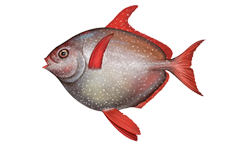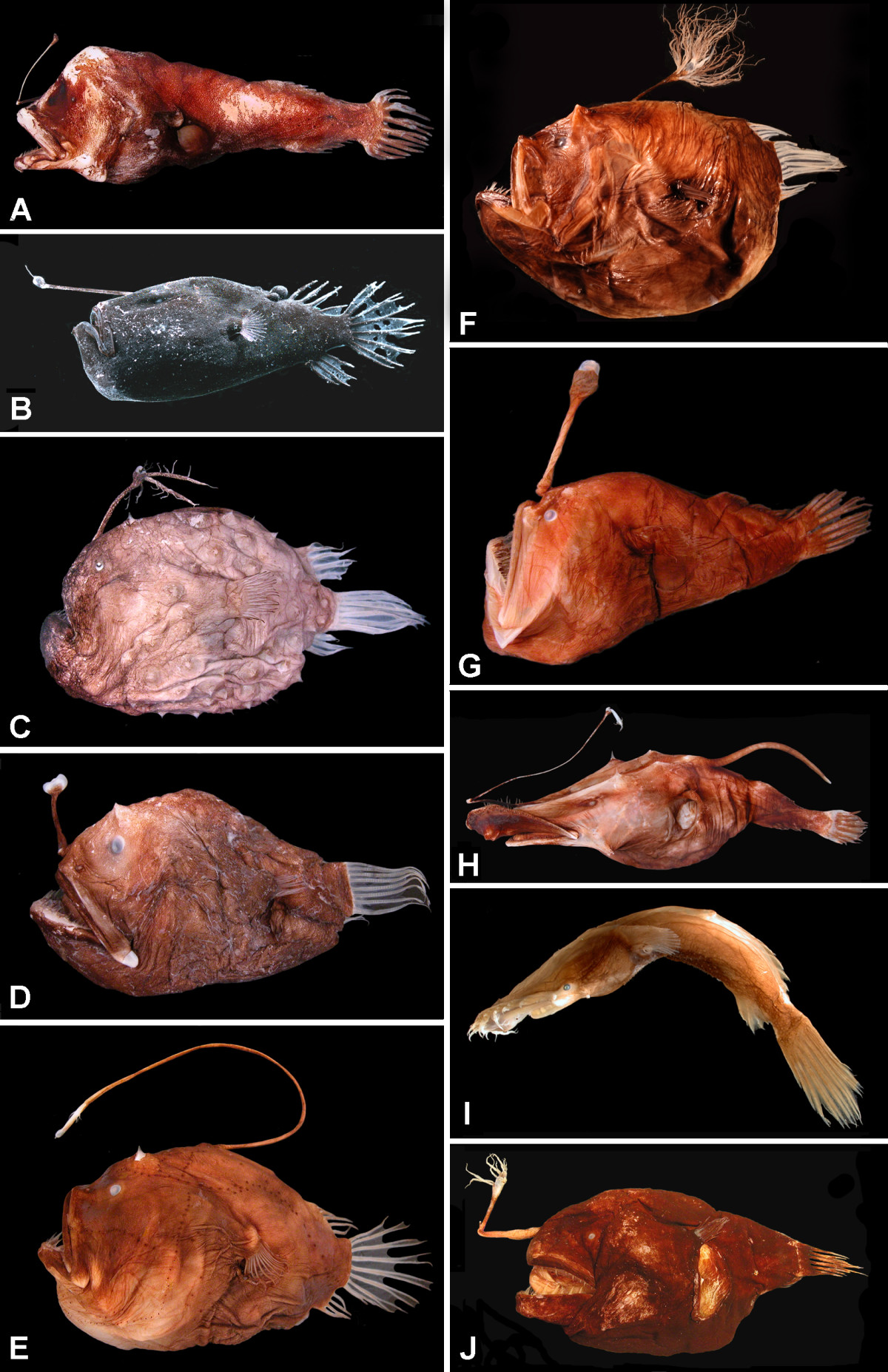|
Eurypterygii
The Neoteleostei is a large clade of bony fish that includes the Ateleopodidae (jellynoses), Aulopiformes (lizardfish), Myctophiformes (lanternfish), Polymixiiformes (beardfish), Percopsiformes (Troutperches), Gadiformes (cods), Zeiformes (dories), Lampriformes (oarfish, opah, ribbonfish), and the populous clade of the Acanthopterygii which includes the Beryciformes (squirrelfish) and the Percomorpha (many families such as the tuna, seahorses, gobies, cichlids, flatfish, wrasse, perches, anglerfish, pufferfish Tetraodontidae is a family of primarily marine and estuarine fish of the order Tetraodontiformes. The family includes many familiar species variously called pufferfish, puffers, balloonfish, blowfish, blowies, bubblefish, globefish, swellfi ...). References {{Taxonbar, from=Q1977650 Fish superorders Euteleostei ... [...More Info...] [...Related Items...] OR: [Wikipedia] [Google] [Baidu] |
Aulopiformes
Aulopiformes is a diverse order of marine ray-finned fish consisting of some 15 extant and several prehistoric families with about 45 genera and over 230 species. The common names grinners, lizardfishes and allies, or aulopiforms are sometimes used for this group. The scientific name means "''Aulopus''-shaped", from '' Aulopus'' (the type genus) + the standard fish order suffix "-formes". It ultimately derives from Ancient Greek ''aulós'' (αὐλός, "flute" or "pipe") + Latin ''forma'' ("external form"), the former in reference to the elongated shape of many aulopiforms.FishBase (2000) They are grouped together because of common features in the structure of their gill arches. Indeed, many authors have considered them so distinct as to warrant separation in a monotypic superorder of the Teleostei, under the name Cyclosquamata. However, monotypic taxa are generally avoided by modern taxonomists if not necessary, and in this case a distinct superorder seems indeed unwarran ... [...More Info...] [...Related Items...] OR: [Wikipedia] [Google] [Baidu] |
Syngnathiformes
The Syngnathiformes are an order of ray-finned fishes that includes the trumpetfishes and seahorses.FishBase (2005)Order Summary for Syngnathiformes Version of 2005-FEB-15. Retrieved 19 Aug 2008. These fishes have elongated, narrow, bodies surrounded by a series of bony rings, and small, tubular mouths. The shape of their mouth—in at least syngnathids—allows for the ingestion of prey at close range via suction. Several groups of Syngnathiformes live among seaweed and swim with their bodies aligned vertically, to blend in with the stems. The most defining characteristic of this order is their reverse sexual system. In this order, males conduct in specialized brooding and rearing of the embryos. The males house eggs in an osmoregulated pouch or adhere eggs to their tail until the eggs reach maturity. The name Syngnathiformes means "conjoined-jaws". It is derived from Ancient Greek ''syn'' (συν, "together") + ''gnathos'' (γνάθος, "jaw"). The ending for fish orders "- ... [...More Info...] [...Related Items...] OR: [Wikipedia] [Google] [Baidu] |
Moonfish 600
Moonfish may refer to several groups of fishes: * Family Monodactylidae (properly ''moonyfishes'') * Ocean sunfish * Opah, genus ''Lampris'' * Genus '' Mene'' ** '' Mene maculata'', only extant member of the genus * ''Selene'' (fish) * Atlantic spadefish (''Chaetodipterus faber'') * Cusk (fish) * Southern platyfish See also * Ocean sunfish is called "moon fish" in many languages * Moonfish (''My Hero Academia''), a character in the manga series ''My Hero Academia'' * Moonfish, a Throughbred horse which placed second in the 1988 Haynes, Hanson and Clark Conditions Stakes {{disambiguation, fish ... [...More Info...] [...Related Items...] OR: [Wikipedia] [Google] [Baidu] |
Acanthomorpha
Acanthomorpha (meaning "thorn-shaped") is an extraordinarily diverse taxon of teleost fishes with spiny rays. The clade contains about one third of the world's modern species of vertebrates: over 14,000 species. A key anatomical innovation in acanthomorphs is hollow and unsegmented spines at the anterior edge of the dorsal and anal fins. A fish can extend these sharp bony spines to protect itself from predators, but can also retract them to decrease drag when swimming. Another shared feature is a particular rostral cartilage, associated with ligaments attached to the rostrum and premaxilla, that enables the fish to protrude its jaws considerably to catch food. Rosen coined the name in 1973 to describe a clade comprising Acanthopterygii, Paracanthopterygii, and also ctenothrissiform fossils from the Cretaceous Period, such as ''Aulolepis'' and ''Ctenothrissa''. Those fossils share several details of the skeleton, and especially of the skull, with modern acanthomorphs. Orig ... [...More Info...] [...Related Items...] OR: [Wikipedia] [Google] [Baidu] |
Myctophum Punctatum1
''Myctophum'' is a genus of lanternfishes, some species of which, such as ''M. punctatum'' are noted for having the Stylophthalmine trait in their larval form. Species There are currently 16 recognized species in this genus: * ''Myctophum affine'' ( Lütken, 1892) (Metallic lantern fish) * '' Myctophum asperum'' J. Richardson, 1845 (Prickly lanternfish) * ''Myctophum aurolaternatum'' Garman, 1899 (Golden lanternfish) * ''Myctophum brachygnathum'' ( Bleeker, 1856) (Short-jawed lanternfish) * ''Myctophum fissunovi'' Becker & Borodulina, 1971 * ''Myctophum indicum'' ( F. Day, 1877) * ''Myctophum lunatum'' Becker & Borodulina, 1978 * ''Myctophum lychnobium'' Bolin, 1946 * ''Myctophum nitidulum'' Garman, 1899 (Pearly lanternfish) * ''Myctophum obtusirostre'' Tåning, 1928 (Bluntsnout lanternfish) * ''Myctophum orientale'' ( C. H. Gilbert, 1913) (Oriental lanternfish) * ''Myctophum ovcharovi'' Tsarin, 1993 * ''Myctophum phengodes'' ( Lütken, 1892) (Bright lanternfish) * '' ... [...More Info...] [...Related Items...] OR: [Wikipedia] [Google] [Baidu] |
Aulopus Filamentosus
''Aulopus'' is a genus of flagfins native to the Atlantic Ocean and the Pacific Ocean. Although ''Aulopus'' is native to both the Atlantic and the Pacific oceans, for the first time in 2010 ''Aulopus filamentosus'' (the royal flagfin), was spotted in Brazilian waters. A discovery like this may suggest that these fish can be found in new environments. Species The recognized species in this genus are: * '' Aulopus bajacali'' Parin & Kotlyar, 1984 (eastern Pacific flagfin) * '' Aulopus cadenati'' Poll, 1953 (Guinean flagfin) * '' Aulopus diactithrix'' Prokofiev, 2008 * '' Aulopus filamentosus'' (Bloch Bloch is a surname of German origin. Notable people with this surname include: A–F * (1859-1914), French rabbi * Adele Bloch-Bauer (1881-1925), Austrian entrepreneur * Albert Bloch (1882–1961), American painter * (born 1972), German motor jour ..., 1792) (royal flagfin) References 2.Carvalho, A., M. Guy, C. Sampaio. 2010. "First report of ''Aulopus'' (Teleostei: Aulopidae) f ... [...More Info...] [...Related Items...] OR: [Wikipedia] [Google] [Baidu] |
Ijimaia Plicatellus1
''Ijimaia'' is a genus of jellynose fishes, one of four in the order Ateleopodiformes. Species The currently recognized species in this genus are: * ''Ijimaia antillarum'' Howell-Rivero, 1935 * ''Ijimaia dofleini'' Sauter, 1905 * ''Ijimaia fowleri'' Howell-Rivero, 1935 * ''Ijimaia loppei'' Roule, 1922 (Loppe's tadpole fish) * ''Ijimaia plicatellus ''Ijimaia plicatellus'' is a species of jellynose fish in the family Ateleopodidae The jellynose fishes or tadpole fishes are the small order Ateleopodiformes. This group of ray-finned fish is monotypic, containing a single family Ateleopodi ...'' ( C. H. Gilbert, 1905) (deepwater ateleopodid) References Ateleopodiformes {{rayfinned-fish-stub ... [...More Info...] [...Related Items...] OR: [Wikipedia] [Google] [Baidu] |
Tetraodontiformes
The Tetraodontiformes are an order of highly derived ray-finned fish, also called the Plectognathi. Sometimes these are classified as a suborder of the order Perciformes. The Tetraodontiformes are represented by 10 extant families and at least 349 species overall; most are marine and dwell in and around tropical coral reefs, but a few species are found in freshwater streams and estuaries. They have no close relatives, and descend from a line of coral-dwelling species that emerged around 80 million years ago. Description Various bizarre forms are included here, all radical departures from the streamlined body plan typical of most fishes. These forms range from nearly square or triangular ( boxfishes), globose (pufferfishes) to laterally compressed (filefishes and triggerfishes). They range in size from ''Rudarius excelsus'' (a filefish), measuring just in length, to the ocean sunfish, the largest of all bony fishes at up to in length and weighing over 2 tonnes. Most members o ... [...More Info...] [...Related Items...] OR: [Wikipedia] [Google] [Baidu] |
Lophiiformes
The anglerfish are fish of the teleost order Lophiiformes (). They are bony fish named for their characteristic mode of predation, in which a modified luminescent fin ray (the esca or illicium) acts as a lure for other fish. The luminescence comes from symbiotic bacteria, which are thought to be acquired from seawater, that dwell in and around the sea. Some anglerfish are notable for extreme sexual dimorphism and sexual symbiosis of the small male with the much larger female, seen in the suborder Ceratioidei, the deep sea anglerfish. In these species, males may be several orders of magnitude smaller than females. Anglerfish occur worldwide. Some are pelagic (dwelling away from the sea floor), while others are benthic (dwelling close to the sea floor). Some live in the deep sea (such as the Ceratiidae), while others on the continental shelf, such as the frogfishes and the Lophiidae (monkfish or goosefish). Pelagic forms are most often laterally compressed, whereas the be ... [...More Info...] [...Related Items...] OR: [Wikipedia] [Google] [Baidu] |
Perciformes
Perciformes (), also called the Percomorpha or Acanthopteri, is an order or superorder of ray-finned fish. If considered a single order, they are the most numerous order of vertebrates, containing about 41% of all bony fish. Perciformes means "perch-like". Perciformes is an Order within the Clade Percomorpha consisting of "perch-like" Percomorphans. This group comprises over 10,000 species found in almost all aquatic ecosystems. The order contains about 160 families, which is the most of any order within the vertebrates. It is also the most variably sized order of vertebrates, ranging from the '' Schindleria brevipinguis'' to the marlin in the genus '' Makaira''. They first appeared and diversified in the Late Cretaceous. Among the well-known members of this group are perch and darters ( Percidae), sea bass and groupers (Serranidae). Characteristics The dorsal and anal fins are divided into anterior spiny and posterior soft-rayed portions, which may be partially or co ... [...More Info...] [...Related Items...] OR: [Wikipedia] [Google] [Baidu] |





